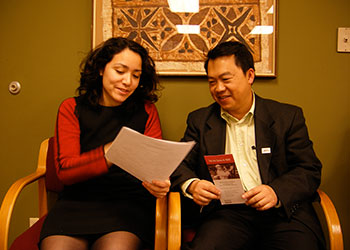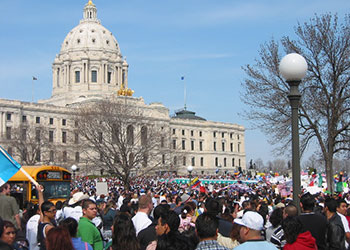News > Fact Sheets
Facts About Family-Based Immigration
Posted on Apr 01 2019
(For printable PDF of this Fact Sheet, click here.)
Family Reunification is a Key Principle of Immigration Law
- Immigration policy emphasizes four major principles: 1) family reunification, 2) skills-based immigration, 3) refugee protection and 4) country of origin diversity.
- Family reunification has been a key immigration policy since the late 1800s. In the 1920s, nativist prejudices changed the law to require national origins quotas, drastically reducing levels of immigration into the United States.
- In 1965, Congress passed the Immigration and Nationality Act (INA), which made changes to immigration based on employment quotas and national origins quotas, and put in place a system of immigration which favored family reunification. The Act granted 74 percent of all permanent visas to family reunification categories.
- The changes enacted in the 1965 INA resulted in a more diverse group of nationalities immigrating to the United States. In recent years, Mexico, the Philippines, China, India and the Dominican Republic have sent the largest number of immigrants based on family reunification.
How Family-Based Immigration Works
- Each year, the U.S. government issues 480,000 family-based visas.
- There is no limit to the number of visas issued to immediate relatives of U,S. citizens who are over 21. “Immediate relatives” of U.S. citizens are spouses, unmarried children under 21, and parents. The number of visas granted to immediate relatives of U.S. citizens is subtracted from the overall 480,000 family-based quota.
- To ensure that all family-based visas are not used by immediate relatives of U.S. citizens, Congress sets a minimum number (usually 226,000) that must be allotted through other family-based preference categories. Other family preferences include unmarried adult children of U.S. citizens, spouses and children under 21 and unmarried adult children of permanent residents, married children of U.S. citizens, and brothers and sisters of adult U.S. citizens.
- S. citizens and legal permanent residents cannot sponsor other family members such as grandparents, cousins, uncles, or other extended family members. These limits and the long wait times disprove the “chain migration” myth.
- The law also prohibits any single country from receiving more than 7 percent of the total number of visas issued in a single year.
- Family-based immigration currently makes up two-thirds of all legal permanent immigration. Each year, the number of family members petitioning for lawful permanent resident status exceeds the total number of family visas set by the 1965 INA. Wait times for available family-based visas can extend for years, particularly for persons from countries with many petitioners, such as India, China, Mexico and the Philippines.
- The visa queue has grown to approximately 4 million persons who qualify as family-based immigrants but who must continue to wait. As of January 2019, some visa petitions for relatives from the Philippines and Mexico have been waiting for 23-24 years.
Why Maintaining Family-Based Immigration is Important
- Reuniting families is not only humane, but also recognizes that for many people, families are a source of emotional and economic support contributing to stability and stronger communities.
- Having strong family support networks increases the odds of immigrants and their U.S.-born children reaching their highest potential.
- According to the National Immigration Forum, the percentage of new businesses started by immigrants went from 13.3 percent in 1997 to 28.5 percent in 2014. New immigrants revitalize rural areas and cities such as Boston, Detroit, and Baltimore and have been crucial to technological success stories in Silicon Valley and across the country.





